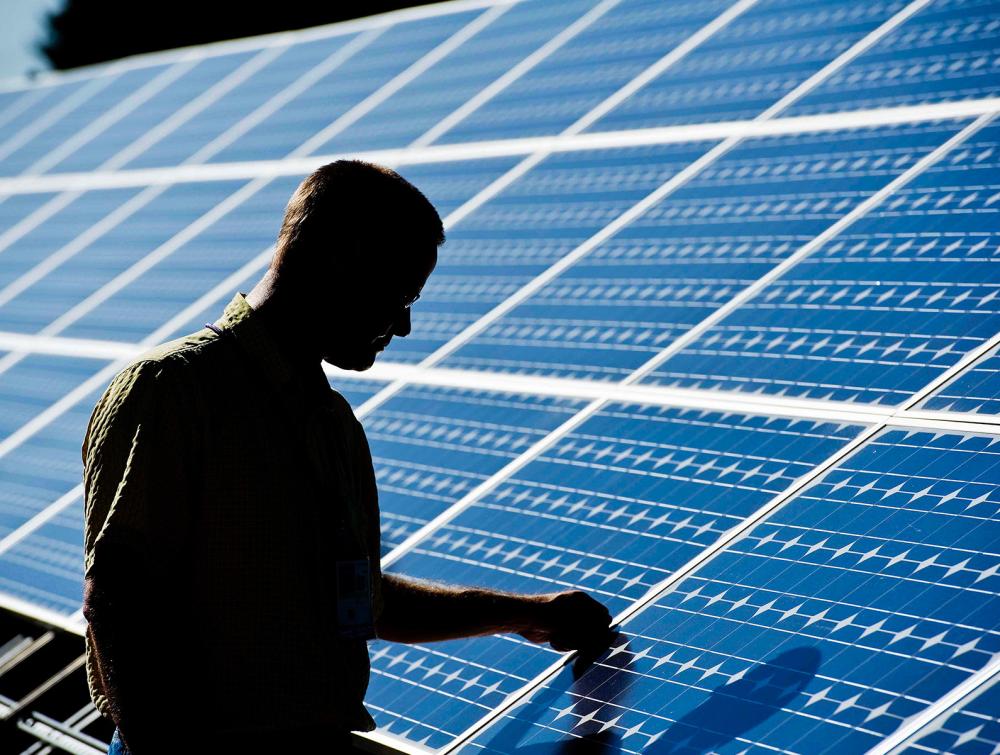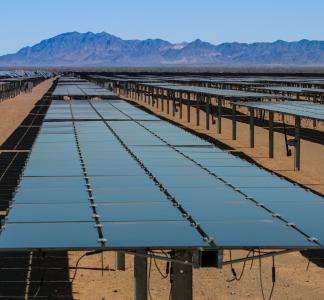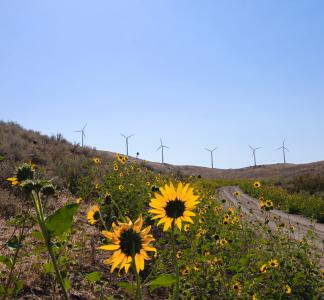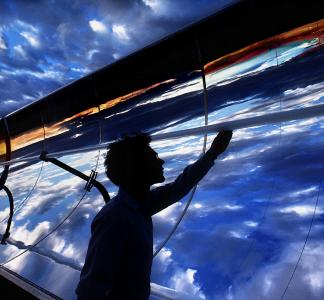The government has a new solar energy plan. What’s in it?

Randy Montoya, Sandia Labs, flickr
Focus on spots in West where community and habitat harm is minimized
Climate change threatens our communities and treasured public lands. To combat this crisis, we need a swift transition to renewable energy: that includes phasing out fossil fuels, building energy-efficient infrastructure, and ramping up rooftop solar panels and larger-scale clean energy projects.
The good news? The West boasts abundant solar, wind and geothermal resources that can help us achieve this transition.
The Bureau of Land Management (BLM) is currently revising the 2012 Western Solar Plan, which guides solar energy development on public lands in certain states. Revising and expanding the plan is a crucial step in shaping the future of renewable energy development on public lands.
The updated Western Solar Plan aims to help President Biden’s ambitious goal of a 100% clean electricity grid by 2035.
The Western Solar Plan will designate areas where BLM will consider solar project proposals, while also identifying sensitive areas that are off-limits to solar. It’s not perfect—but it’s a great starting point that can be improved on as we make the urgent switch to renewable energy.
The solar plan does a bunch of smart stuff...
- It avoids wasting time on bad projects: The plan identifies areas in 11 Western states (Arizona, California, Colorado, Nevada, New Mexico, Utah, Idaho, Montana, Oregon, Washington and Wyoming) as open or closed to solar projects—helping renewable energy companies avoid wasting time on suggesting places to build that are a bad fit. BLM’s preferred option would make as much as 22 million acres open for project applications.
- It focuses on the most sensible places for building solar: The plan focuses on sunny places that have a lot of potential for solar energy and are within 10 miles of transmission lines. It also uses other criteria to minimize harm to wildlife habitat, cultural sites and recreation areas.
- Preventative measures: This plan takes a "smart from the start" approach by crossing places off of the list right from the get-go if they pose lots of complications. This helps avoid situations like the Sweetwater solar project in Wyoming that drove 1,000 migrating pronghorn onto the highway. Under this updated plan, that development probably would have been changed or nixed early on: It was proposed in an area that had crucial habitat for greater sage-grouse, winter range for mule deer and pronghorn and a known migration route.
- It doesn’t guarantee project approvals: This isn’t a way for energy companies to skip regulations or get rubber-stamp approval by the government—every project will still undergo a thorough environmental review process with public input.
...But it could be even better
-
BLM should prioritize building on “disturbed” lands: The plan should say large-scale solar projects can only be built on lands that are already “disturbed or degraded”—places that don’t have much in the way of wild, interconnected habitat and ecosystems. Guiding applications to these lowest conflict places would lead to faster, better projects.
Western Solar Plan part of a smarter, more sustainable approach to public lands management.
The BLM has approved 47 projects since 2021, including solar, geothermal and power lines to connect these projects to the grid. This highlights the Biden administration's efforts to expand renewable energy production on public lands. The Western Solar Plan continues those efforts while serving as one of a package of executive actions that together can make the Biden administration's commitment to a holistic, conservation-minded approach to managing public lands a reality.



